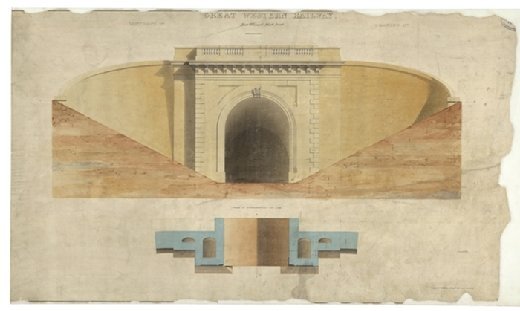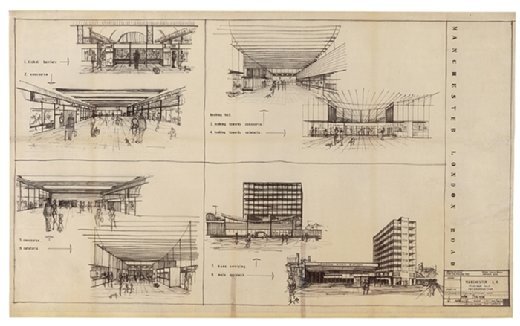
Case study: Network Rail uses cloud to get its digital data preservation plans on track
Digital-by-default railway infrastructure operator, Network Rail, is building a cloud-based archive to protect the organisation’s data assets for future use
Network Rail has owned, operated and maintained the UK’s entire railway infrastructure since 2002, and – by virtue of its age – the vast majority of the organisation’s corporate data is digitised.
All its company reports, board meeting minutes, timetables and marketing campaign documents are paperless, and many of the historical documents it retains for posterity – including engineering drawings dating back to the 1830s – are all stored digitally too.
But, just because the bulk of its document archive is already digitised does not mean the data is not at risk of falling into obsolescence, Network Rail archivist Vicky Stretch tells Computer Weekly.
For instance, some of these documents may have been created using applications that have entered, or are approaching, end of life and, given the pace of technological change that has taken place since Network Rail’s inception, may be stored in soon-to-be defunct file formats.
“Whereas other companies might have huge ledgers and huge amounts of engineering drawings, or project and correspondence files, all of that kind of information only exists for Network Rail digitally,” she says.
“It is a 21st century archive, but we do have historical drawings that relate directly to our infrastructure, and they enable the 21st century railway to exist, run efficiently and be developed.
“But we are at the point now where we know that some of the file formats used to store those documents are going to become unreadable,” says Stretch.
If that were to happen, documents pertaining to the corporate history of Network Rail would be lost, along with details of the very many infrastructure projects it has overseen.

“With more traditional archives, you put something in an acid-free box in a temperature-controlled store, and in 100 years’ time it will still be there and you will still be able to access it,” Stretch continues.
“The same is not true of our digital content today, so it is very important that we preserve it and keep our archive alive.”
The organisation is also obligated, as per the terms of the Railway Heritage Act 1996, to ensure all important business and infrastructure records are preserved indefinitely, and are readily available for regulatory scrutiny as required.
Long-term protection for digital assets
In response to these pressures, the organisation set off on a procurement journey around 18 months ago, geared towards helping Network Rail adopt a more proactive approach to protecting its digital assets.
This, in turn, led Network Rail to strike up a partnership with digital preservation software provider, Preservica, and pave the way for the organisation to create a cloud-based repository for its archived materials to reside in.
Read more about digital preservation
- Transport for London has begun moving its first 3TB of corporate archive data to the AWS cloud with the help of Preservica.
- The head of the Gibraltar National Archives discusses how cloud and archiving technologies are safe-guarding its history for future generations.
- The New York Philharmonic is digitally archiving millions of documents and making them available online.
The Preservica platform is hosted in the Amazon Web Services (AWS) cloud, and is designed to actively manage the file formats of the data stored there and protect them from obsolescence.
With the system selected, Stretch says the organisation is now in the midst of a large-scale data migration to the Preservica platform, with around 4TB of business records prepped and ready to be moved.
“This is an initial collection of digital film and business records, such as annual reports and accounts, timetables, company magazines and marketing campaigns,” she says.
“We also have in the region of 200GB of digitised historical material – which include 19th century drawings of iconic structures by [renowned mechanical engineer] Isambard Kingdom Brunel, Robert Stephenson and the Forth Bridge.”

Once this part of the migration is complete, Stretch says she foresees a time when the organisation will be able to preserve documents earmarked for archiving almost as soon as they are created.
Keeping files alive
From here, not only can it work to ensure its data remains accessible to Network Rail employees and stakeholders for a long time to come, but it can also begin to open up bigger chunks of its archive to the general public.
“We don’t have a facility where the public can come in and look at our records, but we want to be able to make more of that stuff available online, so we can become a one-stop-shop for information about the railways,” Stretch adds.
“We get enquiries from all over the world about the history of our infrastructure, from people working on dissertations, engineers and historians, to people who just have a general interest in how the railway has changed a landscape or the history of a station, for example.”
Having easy access to the data documenting all of the work Network Rail has done since its inception 16 years ago can also make it easier for the powers that be to work out where the business should go next, says Stretch.
“Keeping these files alive for the future means there will be material that can help to inform the business on a day-to-day basis, as we look back on projects we’ve done, the decisions we’ve made and understand as a business what we’ve done and where we’ve come from,” she adds.










